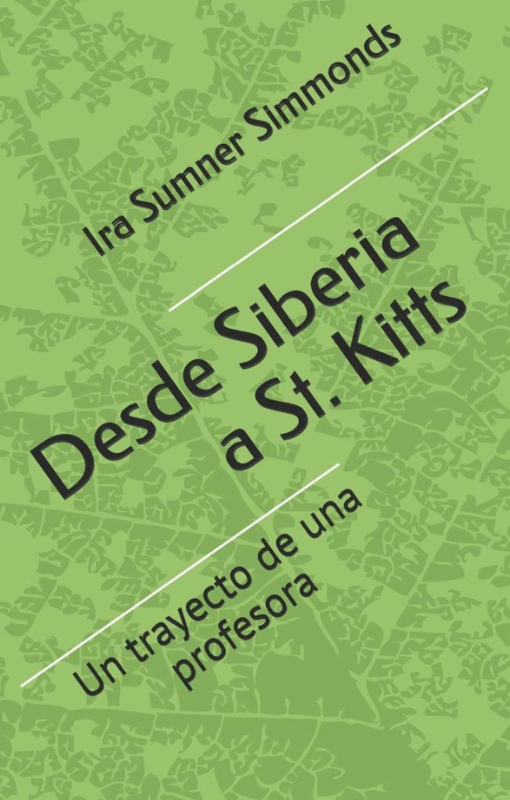Teachers are often remembered for the lessons they teach inside the classroom, but their true impact is measured by the values they leave behind. In From Siberia to St. Kitts, author Ira Sumner Simmonds shares the story of Madame Zenaida Katzen, a disciplined, multilingual educator who shaped countless lives through her methods and personal values. The biography of Zenaida Katzen is a learning opportunity for students of all backgrounds.
Through the biography of Zenaida Katzen, readers find lessons in self-discipline, cultural appreciation, and personal growth that remain relevant today. For students seeking guidance beyond textbooks, her life offers meaningful insights on how to approach learning, relationships, and responsibility.
The Importance of Discipline and Consistency
Madame Katzen held high standards for herself and her students. She expected full participation, punctuality, and preparedness in every class. Her rules weren’t just about control—they reflected a belief that structure builds success. Even when students initially found her methods strict, many later came to appreciate how those standards helped shape their thinking and behavior.
In today’s academic environment, where flexibility is common, her approach reminds students that consistency and self-discipline still matter. The biography of Zenaida Katzen reinforces that growth often comes from routine, repetition, and staying committed to goals even when challenges arise.
The Power of Language and Cultural Exposure
Fluent in multiple languages, Madame Katzen used her linguistic skills not just to teach grammar but to expose her students to cultures beyond their own. She insisted on immersion—conducting classes entirely in French or Spanish—and often invited students to her home, Chalet La Serena, for language clubs that blended food, music, and conversation.
This level of engagement offered more than vocabulary. It gave students a deeper understanding of different customs, traditions, and perspectives. In a globalized world, students benefit immensely from language education that also teaches cultural awareness.
The biography of Zenaida Katzen shows how language can open minds, build empathy, and prepare students for international opportunities. Her dedication to language instruction reminds students that communication is a bridge to broader understanding.
Learning Through Example: Integrity and Self-Respect
Madame Katzen didn’t just teach—she modeled the values she expected from her students. She was always prepared, dressed professionally, and spoke with purpose. Her manner inspired respect not because she demanded it but because she lived by the standards she taught.
Students observing this kind of behavior gain more than academic knowledge—they learn how to carry themselves. Her life is proof that personal character influences teaching just as much as lesson content. Through the biography of Zenaida Katzen, students see the long-term effect of living with consistency, dignity, and professionalism.
These lessons are especially relevant for young adults managing personal responsibility. Madame Katzen’s example offers a guide on how to lead with quiet strength.
Lifelong Learning and Intellectual Curiosity
Despite living through displacement, political unrest, and migration, Madame Katzen never stopped learning. She adapted to new countries, learned new languages, and built new careers. Her willingness to change and learn from every environment showed a commitment to intellectual growth that students can admire.
The biography of Zenaida Katzen highlights this mindset as one of her most valuable traits. Students often think of education as something tied to school or exams. Madame Katzen’s life challenges that idea. She showed that learning continues throughout life, not because of obligation, but because of purpose.
Her story encourages students to remain curious, ask questions, and seek knowledge from every setting—not just classrooms.
Gratitude and Legacy
One of the most touching elements of the book is that it was written by a former student. Ira Sumner Simmonds didn’t forget the impact his teacher had on him. Years later, he returned to visit her and then dedicated himself to sharing her story with the world. This act of remembrance is a lesson in itself.
The biography of Zenaida Katzen reminds students to recognize the people who help shape their path. It encourages gratitude and reflection. In doing so, it also teaches that influence often goes unrecognized at the time but grows clearer with perspective.
Students reading this story will come away with a deeper appreciation not just for teachers but for the lasting power of education itself.
Madame Zenaida Katzen may have taught decades ago, but her story holds lessons that are timeless. Her belief in structure, her passion for language, her dignified presence, and her commitment to growth all speak directly to today’s students. Through her example, learners can better understand what it means to be prepared, curious, and respectful.
The biography of Zenaida Katzen is a call forward. It reminds students that great teaching goes beyond lectures and grades. It shapes lives, builds confidence, and plants the seeds of future success.
This book offers guidance that every student can carry forward in their path.
Read From Siberia to St. Kitts and learn from a teacher whose influence crossed borders and generations.
Let the biography of Zenaida Katzen inspire your dedication to learning and growth.

